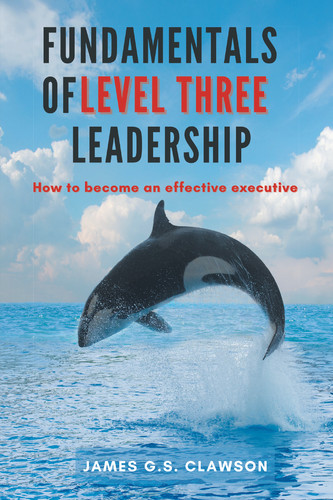Concept
Bicyclists, automobile racers, military teams in the bush, cross-country skiers, and even geese use the concept of rotating leadership. The basic principle is that leading demands more energy than following, so to give the leader a rest, we can rotate that assignment. Of course, in these cases the additional energy burden is largely physical, but it is also psychological. My experience as the CEO of a non-profit organization of 3,000 people and eight different units was enlightening; there is a heavy mantle that descends with those who sit in the last chair. Leadership demands large amounts of physical, psychological, intellectual, and emotional energy. Bureaucratic maintenance requires much less, just do what we have always done. But to lead consumes energy.
In the business world, the experiments with self-directed team organizations included rotating leadership.48 In this arrangement, teams would elect their team leaders from time to time, typically annually. This structure was self-correcting in the sense that if a leader began to feel cocky and arrogant, it was relatively easy to vote the person out and select a new, more sympathetic one. This was a way of avoiding the tendency of bosses to become assholes.49 Informal groups tend to be more self-correcting than assigned groups. Cliques will expel non-conforming members while assigned leaders can often maintain their control by virtue of their legitimate power. (See the chapter on Sources of Influence/Power.) This erodes superior-subordinate trust.50
Further, team leaders learned something of the issues and challenges of managing, something many Technical Experts (see the chapter on Career Concepts) don’t really understand until they get a managerial job. That insight tended to dampen misdirected desires to be promoted for reasons of power and compensation.
It’s one thing to rotate a team leader’s job, it’s another thing to rotate or share the chief executive’s job. Some companies are experimenting with this arrangement.51 Some companies have co-chairmen.52 This structure leads to its own challenges—it requires a group of people who can work together without jealousy, backbiting, undermining, and all of the other issues that arise when people share positions of high power. Typically, that situation leads to in-fighting and sabotage that is dysfunctional for the larger organization. The benefit, of course, is sharing the load—assigning parts of the job to one, other parts to another. One could focus on domestic affairs, for example, another on international affairs. Some academics believe that a shared leadership role is more diverse and therefore more robust.53 The downside is the energy wasted in jockeying for power.54
One can argue that the job of the board of directors is to provide a correcting function here. The difference is that the corrections are made by those above the CEO, not those below, and that the CEO is typically the chief selector of those on the board—so the correcting effect is minimized. Further, boards meet only periodically.
One alternative to the co-CEO structure is the “Moses model.” Moses in his old age had two main advisors, Aaron and Hur, who stood beside him and held up his arms.55 This structure implies a single CEO with two main counselors. Of course, there’s nothing magical about having two and not four main counselors, which is the more common model.
Rotating leadership is one way of sharing the load, distributing leadership is another. Distributed leadership is power to lead pushed down in the organization. See the next chapter on Empowerment. The willingness to let others make significant decisions is couched in a person’s VABEs about control. (See the chapter on Control.) The constantly shifting balance in such a structure is between delegation and control.
Marriage is another playground for this dilemma. Who makes the major decisions? How are the major decisions made? What is the balance of power between the two partners? (and the children if any) What kind of, if any, conflict arises from this binary arrangement?56
Rotating leadership and distributing leadership have as many issues as the single leader. Which is better, in your mind, a single leader or a cadre of leaders? The former pinpoints responsibility, but rests on the abilities and character of that leader. The latter shares a heavy load, but can diffuse responsibility and results.
Example
Tour de France teams and automobile racers frequently draft the leaders to save energy and go faster. They also rotate that leadership to save energy (fuel) and share the burden.
Oracle, Whole Foods, Daimler AG, and Chipotle have all experimented with co-CEOs. At least one company has done this successfully for over seven years.57
Diagram

1. Describe how your team would change if your team elected its leader.
2. What, if any, problems would you anticipate in electing your team leader?
3. What is your opinion about shared leadership at the top of an organization?
4. How do you manage the balance of power in your long-term personal relationships?
48 Clawson, J. The Aberdeen Experiment. Darden Business Publishing, UVAOB-0998.
49 Sutton, R.I. 2010. The No Asshole Rule: Building a Civilized Workplace and Surviving One That Isn’t, Business Plus.
50 For example, http://huffingtonpost.in/debashis-sarkar/being-a-boss-5-deadly-hab_b_9006726.html
51 https://forbes.com/sites/rogertrapp/2017/03/20/can-a-ceo-job-sharework/#5c8241de491c
52 http://businessinsider.com/why-major-companies-have-2-ceos-2014-9
53 Private conversation with a colleague.
54 https://fastcompany.com/40473112/why-having-co-ceos-is-a-bad-idea
55 Holy Bible, Exodus 17:10-12.
56 See, for example, Clawson, J. Dual Career Decision Making. Darden Business Publishing, UVA-PACS-0099.
57 https://forbes.com/sites/amynorman/2016/10/18/theres-no-7-year-itch-in-this-co-ceo-relationship/#2a8a62177f45
